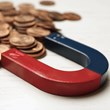
This article originally appeared on LinkedIn.
Consumers love rewards programs. The allure of a free upgrade or an extra night’s stay is enough to inspire the most cynical of customers to learn every angle of their favorite airline, hotel or retailer program, so they can maximize their points.
But do these programs actually build loyalty? I would argue that many don’t—either because the program has become too superficial to engender true loyalty or because it pays customers extra for behavior that would occur anyway.
In the worst cases, poorly managed rewards programs can actually undermine loyalty and create detractors. For example, I recently contacted my regular airline’s loyalty program to ask for a temporary hold on my benefits while I undergo medical treatment for an illness that will keep me on the ground for a while. I thought it was a reasonable request—I have flown millions of miles with this carrier, and I assumed the company would want to keep my business when I resume my travels.
To my dismay, the airline rejected my request, adding another annoyance to an already stressful time. Do you think I will be booking my flights with this carrier in the future?
As my Bain & Company colleagues Aaron Cheris, Gerard du Toit and Brian Kmet wrote recently, getting loyalty right isn’t just about designing and executing a stellar program. Companies that build the most loyal customers—whether it’s through a program or not—ultimately aim to make their lives easier. That requires knowing customers’ needs, on both the macro and micro levels.
Of course, some basics need to be in place. Companies should consider how a loyalty program fits into the broader market mix, how program messaging will align with messaging in other channels, and how it may affect operations or customer service. Thankfully, technology can go a long way toward ensuring successful execution, but programs must also give employees the flexibility to delight a customer when the opportunity arises.
In our experience, the best rewards programs have a combination of the following traits:
- Informed. If a company knows how much each of its customers is worth, and can identify customers with the highest current lifetime value and estimated full potential value, it has a solid base. A/B testing or, better yet, multivariate testing can determine the mix of rewards and marketing messages that’s most likely to increase spending. Such tests uncover the microeconomics of individual customer behavior.
- Targeted. Campaigns to change customer behavior work best when they are highly targeted based on location, frequency or other factors. Starbucks collects data on its customers’ demographics, their payments and transactions, their beverage preferences and more. Using geolocation technology, its mobile application targets users with personalized messages. Loyalty program members might get time-limited coupons, which helps Starbucks raise store use during nonpeak periods. Nearly one-fourth of the chain’s in-store purchases in the US now flow through the app.
- Experiential. Sophisticated programs provide customers with a better experience, rather than just more points. Recently, mobile gaming firms have discovered the power of “free to play” games with status tiers, based on cumulative in-app purchase amounts, that offer users more rapid progress, faster cooldowns before the action resets and better daily check-in rewards.
- Easy. Rewards programs must be effortless to join or use. Too many companies have an application form that at first blush appears to be simple, but then devolves into a multistep process that turns off potential joiners. Customers do need to opt in, though; if they’re enrolled automatically, they may not be aware of the program or change their behavior.
- Responsive. Customers expect their providers to know when they’ve had a bad experience and to recover from those failures quickly and effectively. Companies thus need a feedback process to measure customers’ perceptions of their interactions, fix problems that arise, and close the loop by following up with the customers in question.
Feedback loops and service recovery are built into new software tools from vendors such as Thanx, which counts restaurant chains among its clients. Tomatina, an Italian restaurant chain in California, gets feedback from about 75 guests every week, and at last count between 20% and 25% took the time to add written comments in the Thanx system. Thanx research has shown that consumers are 7% more likely to return in the next two months after being asked for feedback—regardless of their response.
Many companies are pointing to technology as the future of loyalty programs. That’s true to some degree—algorithms and analytics make personalization possible on a massive scale. But technology will never completely replace the human element necessary to build true loyalty. Employees will still need the latitude to go the extra mile for customers, and the freedom to use their best judgement to provide an experience customers will want to share. That’s when the magic happens.

